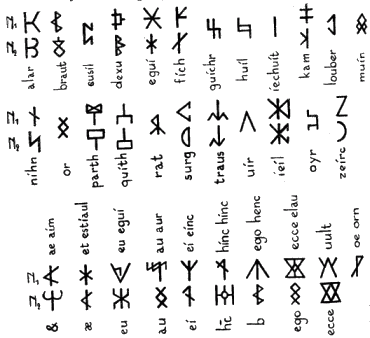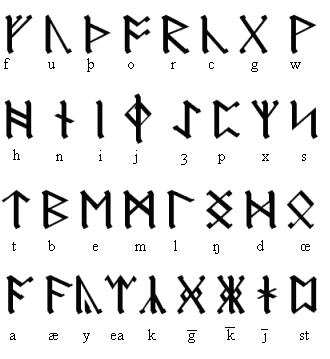












Nennian Alphabet
Around the year 800, a certain Welsh monk and historian named Nennius (or Nemnivus) was challenged by an overbearing Saxon, who derided the Britons as a race without their own alphabet. Nennius is said to have invented an alphabet on the spot:

The column labled N1 is from the manuscripts Bodley MS. F.4.32 and Cotton MS. Titus D 18; while N2 is from Oxford MS. St. John's College 17, and Cotton MS. Galba A 2.
As we can see, the letters resemble a combination of Saxon runes and Roman letters:

Anglo-Saxon Runes
Like the runes, the Nennian alphabet makes use of dipthongs. The primary letters follow the Latin order: a, b, c, d, e, f, g, h, i, k, l, m, n, o, p, q, r, s, t, u, x, y, z. The final row is ae, et (like the ampersand), eu, au, and ei. I'm not sure what "hinc" "henc" and "elau" are, but "uult" is the letter w, while orn is oe. Some of the names seem nonsensical, while others may have the following origins:
SOURCES:
Derolez, R. Runica Manuscripta: The English Tradition. Bruges, Belgium: University of Ghent, 1954.
Williams, Ifor. "Notes on Nennius" Bulletin of the Board of Celtic Studies. v.7 (1935).

Back to "N" | Back to JCE
Home
Mary Jones © 2004